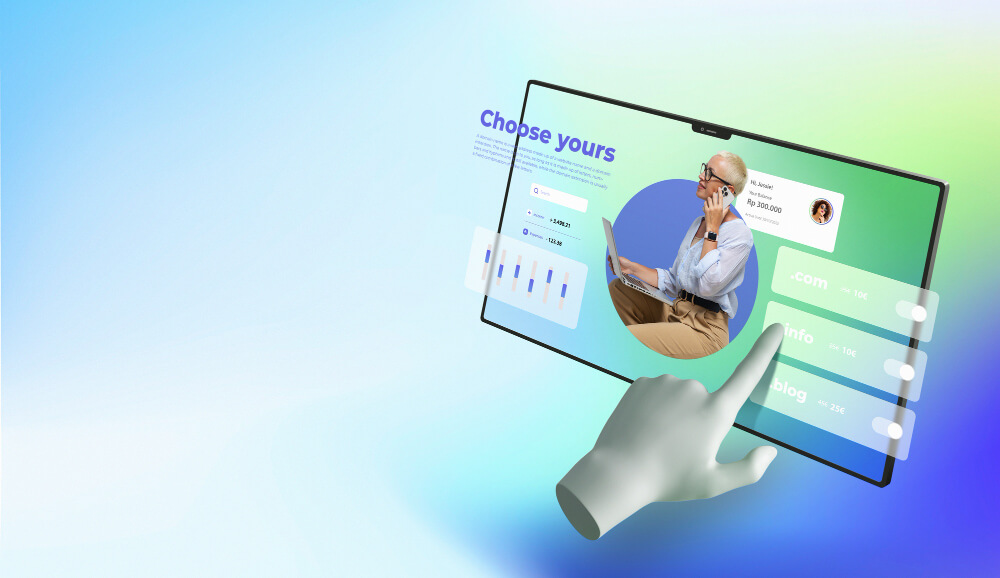Contents
- 1 Introduction: The Power of HR Software
- 2 Core HR Software Features: The Foundation of HR Management
- 3 Recruitment and Onboarding: Streamlining Talent Acquisition
- 4 Performance Management: Nurturing Employee Growth
- 5 Learning and Development: Promoting a Culture of Ongoing Growth and Improvement
- 6 Compensation and Benefits Management: Rewarding Your Workforce
- 7 Time and Attendance: Optimizing Workforce Productivity
- 8 Employee Self-Service: Empowering Your Workforce
- 9 Analytics and Reporting: Data-Driven Decision Making
- 10 Compliance and Security: Protecting Your Organization
- 11 Integration Capabilities: Creating a Seamless HR Ecosystem
- 12 Mobile Accessibility: HR on the Go
- 13 Artificial Intelligence in HR: Embracing the Future
- 14 Choosing the Right HR Software: Key Considerations
Introduction: The Power of HR Software
Human Resources software has become an indispensable tool for organizations of all sizes. By automating routine tasks, providing valuable insights, and improving the employee experience, HR software can significantly enhance the efficiency and effectiveness of HR operations. But not all HR software is created equal. The key to success lies in selecting a solution with the right features that align with your organization’s unique needs and goals.
Core HR Software Features: The Foundation of HR Management
At the heart of any robust HR software lies a set of core features that form the foundation of effective HR management. These essential components include:
- Centralized Employee Database: A single, secure repository for all employee information, including personal details, job history, and performance records.
- Organizational Structure Management: Tools to create and maintain organizational charts, reporting structures, and job hierarchies.
- Document Management: Secure storage and easy retrieval of HR-related documents, such as contracts, policies, and employee handbooks.
- Workflow Automation: Streamlined HR processes for common tasks, reducing manual work and improving efficiency.
- Customization Options: The ability to tailor the software to your organization’s specific needs, including custom fields and workflows.
These core features provide the essential functionality needed to manage your workforce effectively. They serve as the backbone of your HR operations, enabling you to maintain accurate records, streamline processes, and ensure compliance with organizational policies and regulations.
Recruitment and Onboarding: Streamlining Talent Acquisition
In today’s competitive job market, having robust recruitment and onboarding features can give your organization a significant advantage. Look for HR software features that offers:
- Applicant Tracking System (ATS): Manage job postings, applications, and candidate communication in one centralized platform.
- Resume Parsing: Automatically extract relevant information from resumes to populate candidate profiles.
- Interview Scheduling: Manage and set up interview appointments for candidates and hiring managers.
- Offer Management: Create, distribute, and monitor job offers through electronic means.
- Onboarding Checklists: Create and manage customizable onboarding tasks for new hires.
- E-signature Capabilities: Allow new employees to sign necessary documents electronically.
- Background Check Integration: Seamlessly integrate with background check providers for smoother hiring processes.
An effective recruitment and onboarding module can significantly reduce time-to-hire, improve the candidate experience, and ensure new employees hit the ground running.
Performance Management: Nurturing Employee Growth
Modern HR software should offer comprehensive performance management features to help you develop and retain top talent. Key features include:
- Goal Setting and Tracking: Allow employees and managers to set, track, and align individual and team goals with organizational objectives.
- Continuous Feedback: Enable ongoing feedback and recognition between employees and managers.
- Performance Reviews: Conduct regular performance evaluations using customizable review templates and workflows.
- 360-Degree Feedback: Collect comprehensive feedback from multiple sources, including peers, subordinates, and managers.
- Competency Assessments: Evaluate employees against predefined competencies and skills.
- Succession Planning: Identify and develop high-potential employees to ready them for future leadership roles.
By implementing robust performance management features, you can foster a culture of continuous improvement and ensure your employees are aligned with organizational goals.
Learning and Development: Promoting a Culture of Ongoing Growth and Improvement
To stay competitive, organizations must prioritize employee learning and development. Look for HR software that includes:
- Learning Management System (LMS): Create, manage, and deliver online training courses and materials.
- Skills Gap Analysis: Identify areas where employees need additional training or development.
- Certification Tracking: Monitor and manage employee certifications and licenses.
- Social Learning: Encourage knowledge sharing through forums, wikis, and collaborative spaces.
- Mobile Learning: Provide access to learning materials on mobile devices for on-the-go training.
- Gamification: Incorporate game-like elements to increase engagement in learning activities.
By investing in robust learning and development features, you can ensure your workforce remains skilled, engaged, and adaptable to changing business needs.
Compensation and Benefits Management: Rewarding Your Workforce
Properly managing compensation and benefits is critical for drawing in and keeping top talent. Seek HR software that provides:
- Salary Structure Management: Create and maintain salary bands and grades.
- Bonus and Commission Tracking: Manage variable pay components accurately.
- Benefits Administration: Streamline the enrollment and management of employee benefits.
- Total Rewards Statements: Generate comprehensive reports of an employee’s total compensation package.
- Payroll Integration: Seamlessly connect compensation data with payroll systems.
- Equity Management: Monitor and administer employee stock options and other forms of equity-based compensation.
By centralizing compensation and benefits management, you can ensure fair and competitive rewards while simplifying administration for HR teams.
Time and Attendance: Optimizing Workforce Productivity
Effective time and attendance management is crucial for sustaining productivity and managing labor costs. Key features to look for include:
- Time Tracking: Allow employees to clock in and out easily, whether in the office or remotely.
- Leave Management: Enhance the processes for submitting, approving, and tracking employee leave requests.
- Shift Scheduling: Create and manage complex work schedules for different teams or departments.
- Overtime Calculations: Automatically calculate overtime based on predefined rules and regulations.
- Absence Forecasting: Predict and plan for employee absences to maintain adequate staffing levels.
- Time-off Accruals: Automatically calculate and track employee vacation and sick time accruals.
Comprehensive time and attendance features can enhance workforce management, cut labor costs, and boost employee satisfaction.
Employee Self-Service: Empowering Your Workforce
Employee self-service (ESS) portals are gaining significance in contemporary HR software. Look for features such as:
- Personal Information Updates: Allow employees to update their own contact details, emergency contacts, and other personal information.
- Leave Requests: Enable employees to submit and track time-off requests easily.
- Benefits Enrollment: Facilitate online benefits selection and enrollment.
- Payroll Information: Provide access to pay stubs, tax forms, and other payroll-related documents.
- Company Directory: Offer an easily searchable employee directory with contact information and reporting structures.
- Document Access: Allow employees to access and download important company policies and documents.
By implementing comprehensive ESS features, you can reduce the administrative burden on HR teams while empowering employees to manage their own information.
Analytics and Reporting: Data-Driven Decision Making
In today’s data-driven world, robust analytics and reporting capabilities are essential for strategic HR management. Look for features such as:
- Customizable Dashboards: Create visual representations of key HR metrics tailored to different user roles.
- Ad-hoc Reporting: Generate custom reports on-demand to answer specific business questions.
- Predictive Analytics: Leverage AI and machine learning to forecast trends and predict outcomes.
- Benchmarking: Compare your organization’s HR metrics against industry standards.
- Data Visualization: Present complex data in easy-to-understand charts, graphs, and infographics.
- Workforce Planning: Use data-driven insights to make informed decisions about future staffing needs.
By harnessing the power of analytics, HR professionals can make more informed decisions and demonstrate the strategic value of HR to the organization.
Compliance and Security: Protecting Your Organization
With increasing regulatory requirements and data privacy concerns, compliance and security features are crucial in HR software. Key features include:
- Data Encryption: Ensure sensitive employee information is protected both at rest and in transit.
- Role-based Access Control: Restrict access to sensitive data based on user roles and permissions.
- Audit Trails: Maintain detailed logs of all system activities for accountability and compliance.
- GDPR Compliance: Ensure the software adheres to global data protection regulations.
- E-Verify Integration: Streamline employment eligibility verification processes.
- Compliance Reporting: Generate reports required for various regulatory compliance needs.
By prioritizing compliance and security features, you can protect your organization from legal risks and data breaches.
Integration Capabilities: Creating a Seamless HR Ecosystem
For optimal value, your HR software should seamlessly integrate with other business systems. Look for:
- API Availability: Open APIs that allow for custom integrations with other software.
- Pre-built Integrations: Ready-to-use connections with widely-used business applications.
- Single Sign-On (SSO): Allow users to access multiple applications using a single set of login credentials.
- Data Synchronization: Ensure consistent data across all integrated systems.
- Workflow Integration: Connect HR processes with other business workflows for greater efficiency.
- Marketplace or App Store: Access to additional third-party applications that extend the software’s functionality.
Strong integration capabilities ensure that your HR software works harmoniously with your existing technology stack, creating a unified business ecosystem.
Mobile Accessibility: HR on the Go
In today’s mobile-first world, HR software must be accessible on various devices. Key mobile features include:
- Mobile-responsive Design: Ensure the software is easily usable on smartphones and tablets.
- Native Mobile Apps: Dedicated apps for iOS and Android devices for optimal mobile experience.
- Offline Access: Enable users to utilize specific features and access data without an internet connection.
- Push Notifications: Send important alerts and reminders directly to users’ mobile devices.
- Biometric Authentication: Enable secure login using fingerprint or facial recognition.
- Mobile-friendly Forms: Optimize data entry forms for easy completion on mobile devices.
By prioritizing mobile accessibility, you can ensure that employees and managers can access critical HR functions anytime, anywhere.
Artificial Intelligence in HR: Embracing the Future
Artificial Intelligence (AI) is revolutionizing HR software, offering advanced capabilities that were once unimaginable. Look for AI-powered features such as:
- Chatbots: AI-powered assistants that can answer employee queries and guide them through HR processes.
- Resume Screening: Automatically identify the most qualified candidates from large applicant pools.
- Sentiment Analysis: Analyze employee feedback and communications to gauge overall workplace sentiment.
- Predictive Analytics: Forecast employee turnover, performance trends, and other key HR metrics.
- Personalized Learning Recommendations: Suggest relevant training content based on an employee’s role, skills, and career aspirations.
- Natural Language Processing: Enable more intuitive search and navigation within the HR software.
By embracing AI-powered features, you can unlock new levels of efficiency and insight in your HR operations.
Choosing the Right HR Software: Key Considerations
Selecting the right HR software with the appropriate features is a crucial decision that can significantly impact your organization’s success.Keep these factors in mind when making your decision:
- Scalability: Verify that the software can expand in line with your organization’s growth.
- User Experience: Prioritize intuitive interfaces and ease of use for all stakeholders.
- Customization: Look for flexibility in adapting the software to your unique processes.
- Support and Training: Evaluate the vendor’s customer support and training services.
- Total Cost of Ownership: Consider not just the initial price, but ongoing costs and potential ROI.
- Implementation Time: Assess how quickly the software can be deployed and adopted.
- Vendor Reputation: Research the vendor’s track record and customer satisfaction levels.
- Future Development: Inquire about the vendor’s roadmap for future feature enhancements.
By carefully evaluating these factors alongside the specific features offered, you can select an HR software solution that best fits your organization’s needs and goals.
Conclusion: Embracing the HR Software Revolution
In today’s fast-paced business environment, embracing HR software is no longer a luxury but a necessity. The evolution of HR technology offers unparalleled efficiency, streamlined processes, and enhanced decision-making capabilities. By adopting cutting-edge HR software, organizations can automate routine tasks, improve data accuracy, and provide a more engaging experience for employees. As businesses continue to navigate complex HR challenges, leveraging these technological advancements will not only optimize operations but also drive strategic growth and foster a more dynamic and productive workplace. Embracing the HR software revolution is not just about keeping up with trends—it’s about staying ahead and ensuring that your organization thrives in the modern landscape.





